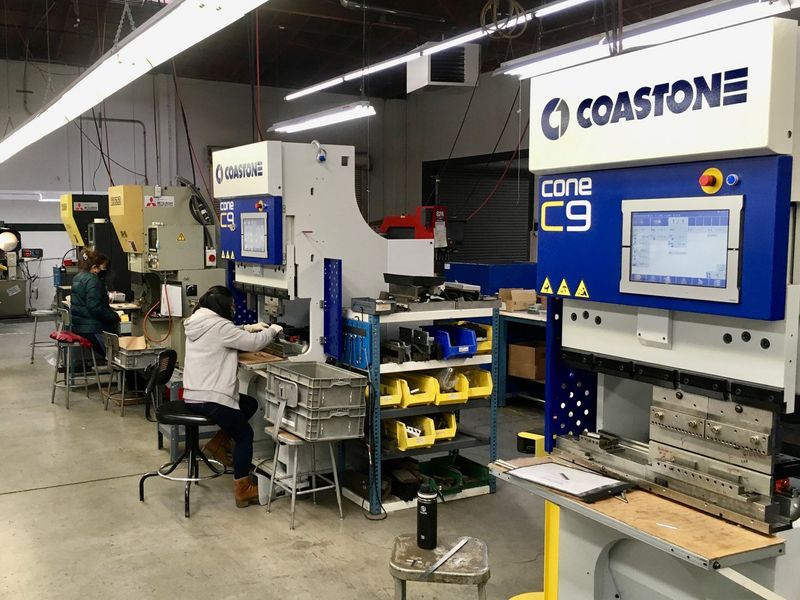WASHINGTON (Reuters) – Output at U.S. factories plunged in February, depressed by winter storms in Texas, which put some petroleum refineries, petrochemical facilities and plastic resin plants out of commission for the rest of that month.
Manufacturing production dropped 3.1% last month, also weighed down by a global semiconductor shortage, the Federal Reserve said on Tuesday. That followed a 1.2% jump in January and ended nine straight monthly increases in factory output. Manufacturing production remains below its pre-pandemic level.
Economists polled by Reuters had forecast manufacturing output would dip 0.1% in February.
Stormy weather battered the South last month, leaving large parts of Texas without power or water for days. The deep freeze shut oil production and refineries in the state, the biggest producer of natural gas and oil in the United States.
That likely had a ripple effect on segments of manufacturing tied to the oil industry. Excluding the weather impact, manufacturing output fell 0.5%, the U.S. central bank said.
Production at auto plants continued to be hampered by a shortage of semiconductors, tumbling 8.3% last month.
But manufacturing, which accounts for 11.9% of the U.S. economy, remains underpinned by lean inventories and strong demand for goods, though a shift to services like airline travel and hotel accommodation is likely in the months ahead as more Americans get COVID-19 vaccinations.
A survey this month showed manufacturing sentiment increased to a three-year high in February.
The weakness in manufacturing output combined with a 5.4% dive in mining to push down industrial production by 2.2% in February. That followed a 1.1% jump in January. Bitterly cold temperatures boosted utilities output 7.4%.
Capacity utilization for the manufacturing sector, a measure of how fully firms are using their resources, dropped 2.3 percentage points to 72.3% in February.
Overall capacity use for the industrial sector decreased 1.7 percentage points to 73.8% in February. It is 5.8 percentage points below its 1972-2020 average.
Officials at the Fed tend to look at capacity use measures for signals of how much “slack” remains in the economy — how far growth has room to run before it becomes inflationary.
(Reporting by Lucia Mutikani; Editing by Paul Simao)



















